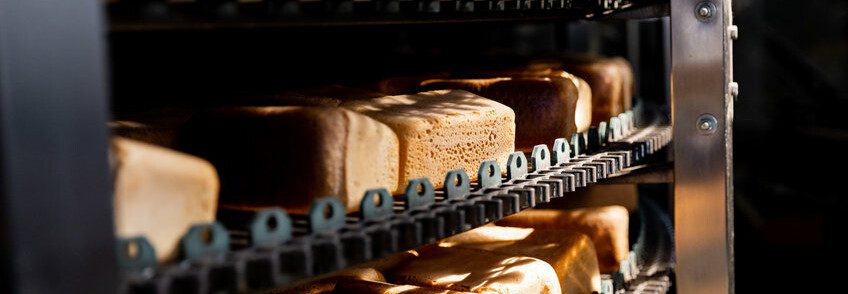
Make your bread cooling more efficient.
Once your bread exits the oven, it enters an extremely crucial stage: cooling. The goal is to move the bread as soon possible on to packaging. Yet do that too quickly or too slowly, and you’re going to end up with a lower quality product, or product waste. The goal is to decrease the internal temperature of the baked bread from 93–97°C (200–208°F), at depanning or coming out of the oven, to 32–43°C (90–110°F).
How is bread cooled?
Over time, baked bread loses moisture and dries out due to differences in water content between the crumb and crust. This can be managed:
- Manually by placing on cooling racks after depanning (ambient or natural cooling)
- Automatically using racks, trays, or continuous conveyor belts (or spirals in wholesale breadmaking operations)
Too much time cooling:
- The internal temperature is too low
- The finished product is drier and firmer with brittle, harsh eating qualities (crumbly)
- The dryness and loss of moisture contributes to a faster loaf staling
Not enough time cooling:
- Bread sidewalls will be weak and may collapse while passing through the slicer
- Slices will be ragged and may tear due to excessive moisture remaining in the loaf and the crumb being too soft
- Gumming up of the slicer blades thus increasing downtime
- Pilling of the crumb
- Excess moisture due to condensation in the wrapper, thus encouraging mold growth

